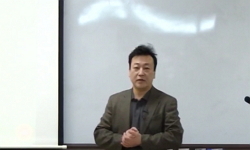First, I raised an issue in this article whether there had been happened something like authenticity issues in the pre-modern Korean lawsuits(SectionⅠ). The short answer is that although there were no such abstract concepts like authenticity or auth...
http://chineseinput.net/에서 pinyin(병음)방식으로 중국어를 변환할 수 있습니다.
변환된 중국어를 복사하여 사용하시면 됩니다.
- 中文 을 입력하시려면 zhongwen을 입력하시고 space를누르시면됩니다.
- 北京 을 입력하시려면 beijing을 입력하시고 space를 누르시면 됩니다.

조선시대 사송(詞訟)에서 제기되는 문서의 진정성(眞正性) 문제들 = Authenticity Issues which had been happened in slave ownership lawsuit of late 16th century Choson period
한글로보기https://www.riss.kr/link?id=A100352208
- 저자
- 발행기관
- 학술지명
- 권호사항
-
발행연도
2015
-
작성언어
-
-
주제어
진정성 ; 결송입안 ; 입안 ; 입지 ; 공증 ; 토지가옥증명규칙 ; Authenticity ; trial-transcript ; public notary ; Ib-an ; Ib-ji system ; The Act of public ; notary of ownership ; of land and house ; which was promulgated ; in the year of 1906 Korea
-
KDC
900
-
등재정보
KCI등재
-
자료형태
학술저널
-
수록면
89-112(24쪽)
- DOI식별코드
- 제공처
- 소장기관
-
0
상세조회 -
0
다운로드
부가정보
다국어 초록 (Multilingual Abstract)
First, I raised an issue in this article whether there had been happened something like authenticity issues in the pre-modern Korean lawsuits(SectionⅠ). The short answer is that although there were no such abstract concepts like authenticity or authentication, pre-modern Korean parties raised, argued, and defended various issues which could be understood clearly authenticity related problems. Second, I chose a very long trial trans-script about slave ownership lawsuit of late 16th century Choson period as a sample evidence. The trial trans-script not only described all the arguments of both parties, but also all the procedures which were taken word by word. I depicted the gist of the lawsuit and analyzed it from the viewpoint of modern authenticity and chain of custody issues (Section Ⅱ&Ⅲ). Third, prohibition and punishment of the forgery of official or private documents are very useful and important to secure authenticity and chain of custody of documents, so I scrutinized the legal regime of Choson period meticulously (Section Ⅳ). Fourth, I compared so called Ib-an·Ib-ji system, which was a kind of public notary regime of Choson period, with that of the Act of public notary of ownership of land and house which was promulgated in the year of 1906 modern Korea. Finally, I concluded that it is necessary to do a study which scrutinize the history of public notary in the West and the East from the viewpoint of comparison, what were the differences and uniqueness`s and what were the results etc.
동일학술지(권/호) 다른 논문
-
- 한국고문서학회
- 박성호 ( Seong Ho Park )
- 2015
- KCI등재
-
조선시대(朝鮮時代) 외교문서(外交文書) 자문(咨文)의 행이체계(行移體系)와 변화과정
- 한국고문서학회
- 김경록 ( Kyeong Lok Kim )
- 2015
- KCI등재
-
- 한국고문서학회
- 임영현 ( Young Hyeon Im )
- 2015
- KCI등재
-
- 한국고문서학회
- 조계영 ( Gye Young Cho )
- 2015
- KCI등재




 KCI
KCI KISS
KISS






